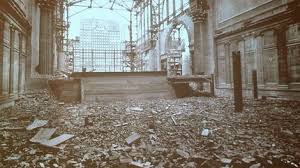Reflections on Diversity and the Built Environment at Centre A
Friday January 22nd, 2016

Written by Vancouver Biennale Team Member Ghazaleh
I arrived at the panel discussion Diversity and the Built Environment at Centre A this past Saturday. It was packed, full of people. Unable to walk through the crowd, I stood at the far back among other eager visitors staring at Seung Woo Back’s large photographic work, his second major exhibition in Canada following his international Vancouver Biennale residency project Cross Vancouver. We stood there and we listened for over 2 hours, something you rarely see people do these days when there aren’t any flashing visuals involved.
The event felt important, valid opinions were said out loud and interesting questions were considered. This is what happens when an architect, urban planner, community builder, community activist and community planner walk into a gallery and are invited to have an open discussion. Reflections on past experiences and envisioning ways for Vancouver’s Chinatown future were discussed in a deeper way, particularly addressing the challenge of 105 Keefer.
Coming from Amsterdam and living throughout Europe, where the old is present in everyday life and actively maintained, the nature and character of evolving cities (young and old) have been visible to me in different forms, and Vancouver as a young city is going through an interesting evolution.
During the discussion it was said we need to be mindful how we choose to evolve our cities. One of the panellists said: “(…) improving our cities rather than destroying our cities (…)” this reminded me of the destruction of Penn Station in New York, the Art-Deco version of Ziegfeld Theatre or really anything Robert Moses related. On my walk home I went over many examples of city destruction and preservation in my mind, and how we are tied to our past, how we need this past to be visible for future generations to learn, to teach and to understand. It is unfortunate to say the least, that we continue destroying and erasing our history rather than respecting it.
In any event, it was good to hear and see so many people taking such an interest in what our city should look and feel like, and how in the end, it is our responsibility to decide what we choose to neglect, what we choose to esteem and what the affect of those decisions will be in the long run.
